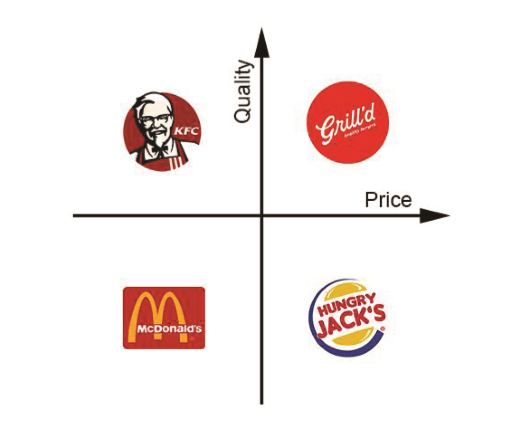
Communicating online
One of the biggest differences experienced by retailers already operating in a bricks-and-mortar context when they launch online is how they communicate their brand. In a traditional retailing context brand is communicated in a controlled fashion. Retailers do their best through advertising and marketing to send a message of their brand purpose and communicate their offer of products and services in an appealing yet consistent way to build a positive impression in the minds of their target market that will influence their purchase decisions. In an online context communication of brand is largely about online brand positioning and the effective employment of online tools that allow customers to communicate amongst themselves about the brand and in many cases actively endorse the brand to a wider online audience. Brands such as Apple have benefited greatly from this as their brand evangelists (customers that are brand devotees) generate the majority of product endorsement for them online.
Methods of brand communication
The change of pace online can make it challenging for retailers to keep up. New vehicles for brand communication are launched frequently and it can be tempting to jump on the bandwagon of each in order to capture the hearts and minds of the target audience. It is more effective however to understand the key methods of brand communication and decide which may be most advantageous to use in order to reach the target audience in question. The primary method of brand communication online is the business’s website. Ideally a website will provide clear and current information on the retailer and the products and services offered, and an avenue to purchase them. Websites can act as the key source of product launch information and reflect the brand’s mission, vision and key values.
Online retailers have a variety of communication options available to them beyond websites, including Facebook, Twitter, YouTube, Pinterest, each of which have different focus and outcome.
One of the greatest advantages of leveraging social media related forms of communication is the opportunity for customers to take ownership of the brand communication and share with their friends positive brand experiences.
Positioning a brand online
To effectively plan how a brand will be communicated online retailers need to ensure considerations of online brand positioning are part of their web strategy. The concept of positioning an online business in the minds of customers includes how the business is perceived in comparison to others. So what exactly is positioning? It is the perception customers have of a business. Positioning is how a business wants their brand to be perceived by others. Consider Ford, Lexus and Bentley. They are all car manufacturers, yet all are perceived differently in the marketplace. This is due to brand positioning. The first step in the brand positioning process is to build the positioning statement. It is a sentence that defines the core of the company’s brand. Before crafting this statement, it is essential to spend adequate time performing preliminary analysis on the business itself. This template can be used to build the positioning statement:
For (insert customer base), (insert company name) offers (insert product and key benefit) to provide (insert competitive advantage)
For example:
- For economical fashionistas, Sally’s Fashion Shop offers affordable, trendy women’s apparel to provide ultimate comfort
- For high-tech gadget lovers, Johnny’s Store offers the newest electronic products to provide the latest offering to customers
A positioning statement acts as an internal guide to craft the overall business strategy. The key features of the statement can be adapted for use as sales and marketing tools. Once the position is defined the next phase is to conduct a comparison. This can be achieved by using a brand matrix. Think of this matrix as the coordinates where different businesses are in your mind, based on two different values.
The following example illustrates the positioning of four hamburger chains, based on quality and price. Please note that you can base your matrix on ANY combination of values (price, quality, leadership, respect, product offering, etc.)

In many organisations, there is still much confusion about the role of strategic brand development and brand management and who within the organisation should lead it. In small businesses, brand management can be ignored, outsourced or delegated, when in truth it is critical that the owner retains direct responsibility for the brand management function.
Business leaders have traditionally looked at marketing in general as a necessary evil as it is an area that requires considerable investment without guaranteeing predictable returns. And in today’s social media, permission and privacy driven world, marketing is even more suspicious to consumers. Customers want real, authentic connections and engagement with brands, not more marketing and selling. This is where effectiveness needs to be measured when developing an online presence.
Looking to gain an edge in online retail? The ARA Retail Institute provides leading accredited training options including the Diploma for Retail Management (Multichannel).
{{cta(‘992a2ab8-ac96-4fb0-a308-1edfdc3bd0bd’,’justifyleft’)}}
Find more information about the services provided by The ARA Retail Institute here.





















